Dehydrate Canned Pumpkin – Make Pumpkin Powder
Dehydrate canned pumpkin, save tons of space in your pantry, and give you tons of ways to use pumpkin powder all year long! It even lets you make pumpkin pies any time you want without storing those cans!
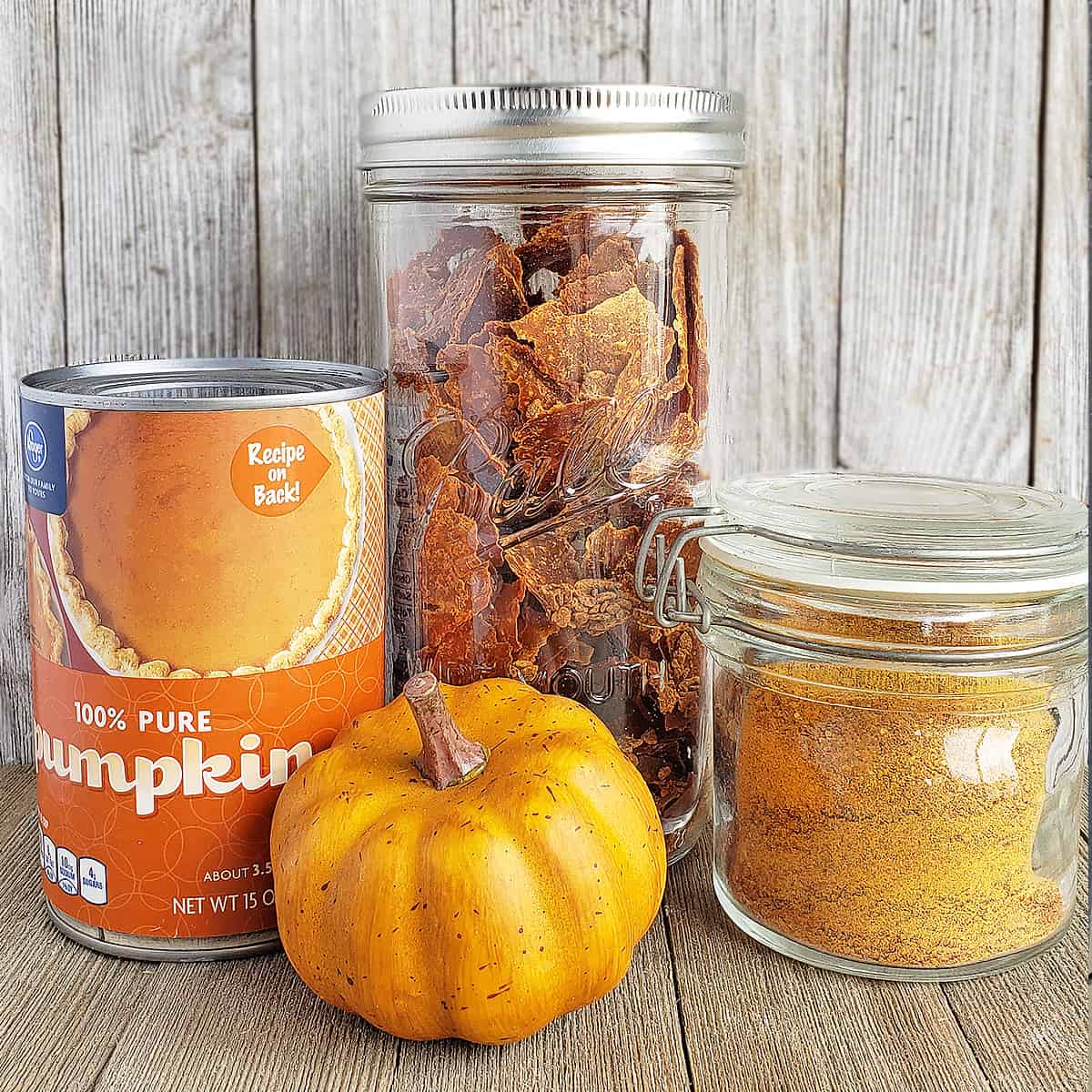
I have a confession to make. I hoard pumpkins. Lots of it. Do you remember the pumpkin shortage of 2011 (and 2017, 2018, and 2019…)? My habit started then. I’m sure of it.
I use pumpkin all year long. We love muffins throughout the year and will make pumpkin pancakes or smoothies if we’re in the mood, especially if we’re partaking in a little Harry Potter movie marathoning. But seriously, we eat pumpkin all year long.
Why dehydrate pumpkin when you’ve already got it canned or frozen in your freezer? Space-saving, my friends, space-saving. Especially if you tend to be a bit purist about when you can eat pumpkin, you can stockpile through the season and create space by dehydrating your overstock.
Plus, it’s another powder to add to your powder collection in the pantry!
How to Dehydrate Canned Pumpkin
(And as a bonus – for those of you who have home canned pumpkin chunks, you can dehydrate that, too! Just pour out the liquid, mash the chunks and proceed
Canned pumpkin is super easy to dehydrate because it is as easy as pouring onto your tray, spreading it out, and putting it into your dehydrator trays. Homemade pumpkin puree is best, but there’s just something fundamentally awesome about easy dehydrator projects that require very little work!
1. Wash can tops
This is important as can tops can collect all sorts of ick from the store shelves, and even from your own, so always give them a good cleaning first. A simple wipe with a hot rag or vinegar dip is fine.
2. Spread onto trays in a thin layer
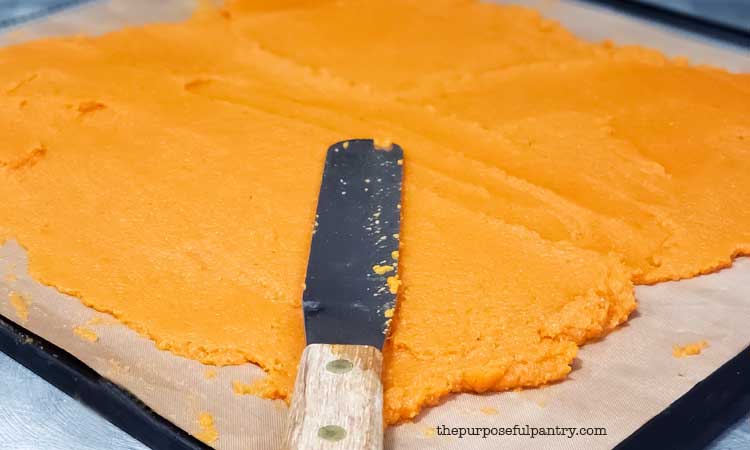
You’ll want to use parchment paper or tray liners for this project. I have both the Excalibur Paraflexx sheets and a generic set of nonstick sheets. Both work equally well, though the Paraflexx sheets move around less as you spread. You’ll find more ideas of what I recommend on The Purposeful Pantry recommends page.
You may find that you like using an icing knife (or even better, an offset spatula) better than a regular silicone spatula.
Make sure to spread the puree out into the thinnest layer possible. It will make it easier to dehydrate and go more quickly.
► Tip: If using homemade pumpkin puree, measure by the cup as you put them on trays. It will help you later in knowing how to store and reconstitute.
3. Dry at 125°F/52°C for 10-12 hours
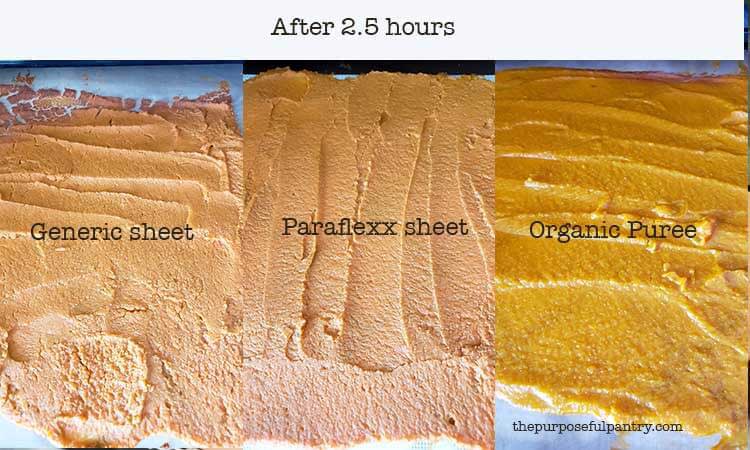
4. Check for dryness
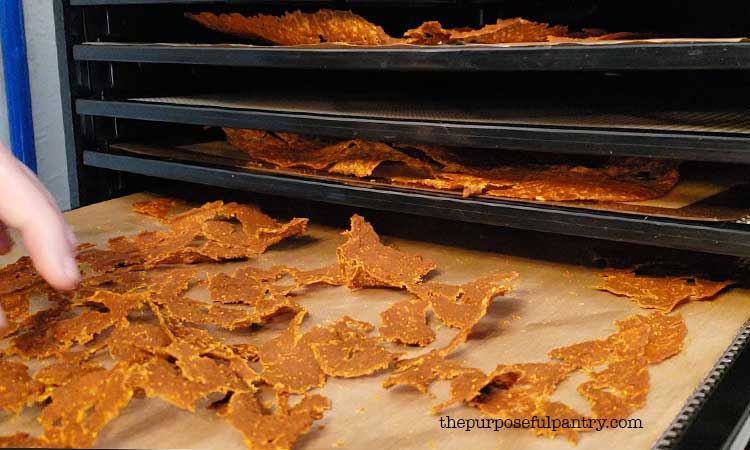
Before testing, be sure to allow leather to cool. I dry to brittleness since this isn’t going to be a snack. The sections should break easily, and not bend.
5. Condition
Conditioning your dehydrated produce is imperative to safely storing your dehydrated products. Follow the steps for conditioning your dehydrated food, and you can be sure that you won’t experience issues with mold or softening.
Dehydrating Pumpin Tips and Questions
It is helpful to rotate trays after a few hours to help drying time be more efficient. It is necessary more in stackable dehydrators, but you may find that you should spin your trays on cabinet-style machines.
If your puree is from a box vs a can, it may be moister and need to be reduced before drying to reduce drying time. Simply simmer on the stovetop until the puree has become thick.
4:1 pumpkin powder to water (1/4 Cup pumpkin powder to 1 Cup Water) However, you may need to adjust your ratio depending on the results. If the consistency is too thick, add a little liquid. Too thin? Add a bit more powder.
Approximately 1/2 Cup of pumpkin powder plus 2 cups of water equals a 15-ounce can of pumpkin puree. Your results will vary in terms of consistency, so adjust up or down on the amount of water you need to get that consistency you desire.
A note about Dehydrator Sheets
The last time I dehydrated pumpkin, I didn’t use the Paraflexx sheet. I had enough of the generic sheets for the project. This time, I did use both and I noticed something …
The generic sheets are allowing the pumpkin to dry much faster, cracking (which is fine for this process since I’ll be powdering), and browning up faster.
I may have spread these a little too thin on both sets, but I was surprised to see the difference in how each tray responds. And all the generic sheet trays are doing the same. I’ve been rotating them often to keep them from getting too dry on one side and not the other. Nothing is burned, but it was interesting to see how each sheet reacted.
This is not to give preference to either as being better than the other. But just something to notice that if you do things differently between trays, be sure to keep your eye on it so that you can react accordingly.
STORING DEHYDRATED PUMPKIN
At this point, you can store your pumpkin sheets in airtight containers to rehydrate as needed. I use a vacuum sealer + jar attachment (one of my favorite budget-friendly food storage tools!) to vacuum seal my pumpkin chips in a mason jar.
If you don’t have a vacuum sealer, O2 packs (oxygen absorbers) can be put into your jar, which will help form a vacuum after about 24 hours. This would be necessary if you’re storing these for three months or longer since they are one-time-use items. If you’re in and out of the jar often, desiccant packs are better to help control moisture.
Learn more: How to Store Dehydrated Foods
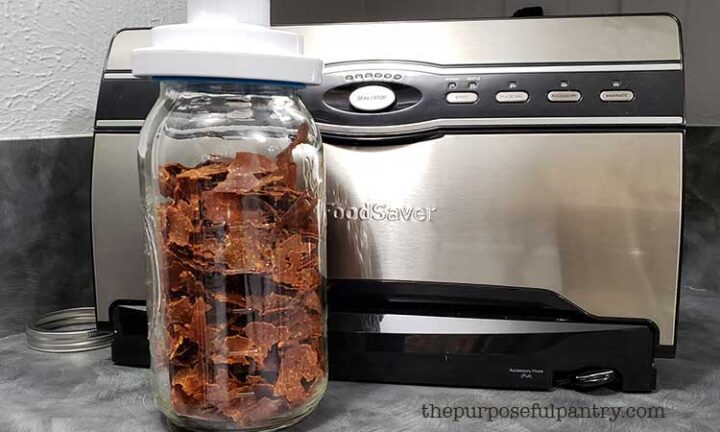
This time, however, I will show you how to take it one step further and make pumpkin powder!
How to Make Pumpkin Powder
If you plan on making pumpkin powder from your dehydrated pumpkin puree, you don’t need to worry about how much each sheet holds. You’ll measure the powder in a ratio to water to get the end product.
Grind your dehydrated pumpkin until you’re down to a powder. You’ll want to sift it through a wire mesh strainer.
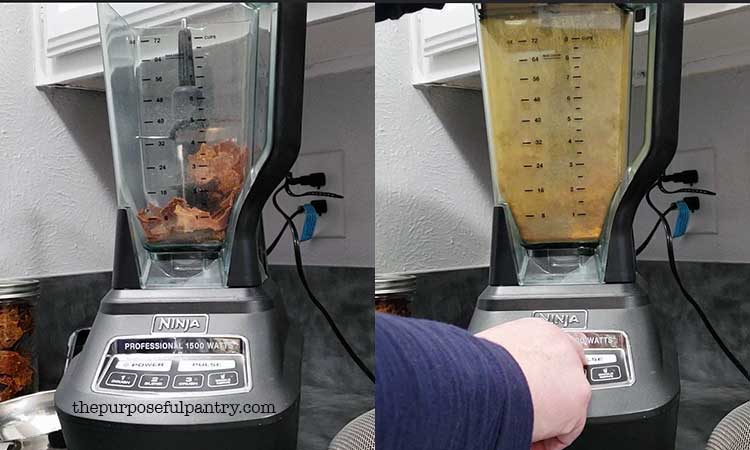
Repeat this with the leftover bits as many times as you need to. It took me three times of running through the blender to get to the point where I was happy with the amount of powder I got, and I threw the last little bit into my coffee grinder for the last bit because it works better in a large blender.
LEARN MORE: How to Dehydrate Pumpkin Leaves and Make Green Pumpkin Powder
How to Use Dehydrated Pumpkin Puree
The ratio of rehydrating powdered pumpkin is this:
To rehydrate, use a 4:1 ratio of water to pumpkin powder and allow it to sit for 20-30 minutes to rehydrate fully.
2 C water to 1/2 C pumpkin powder = 2 C pumpkin puree
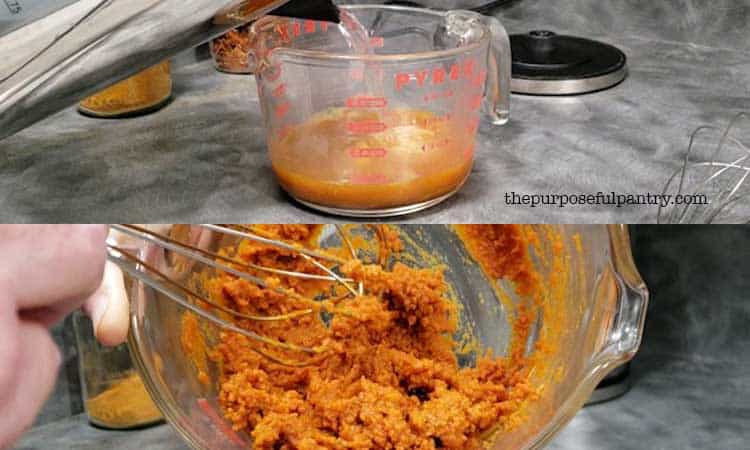
This particular ratio was 1/4 C to 1 C of water and was a little too thick. I added about 1 C more to make it more of the consistency of the original canned pumpkin. Though the ratio is 4:1 – you may have to play a little to get exactly the consistency you want.
Use puree as normal in pies, muffins, etc.!
LEARN MORE: Make Health Pumpkin Waffles with your rehydrated pumpkin powder!
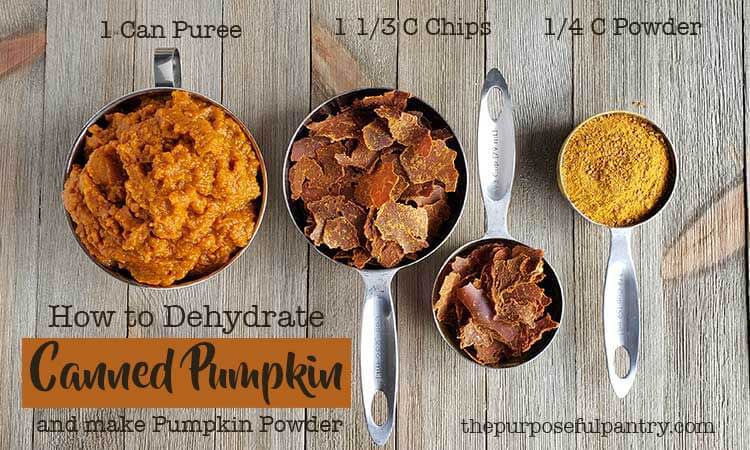
When I realized just how much of my pantry could be dehydrated to save space for more food storage, I was astonished! This is my favorite thing to have handy for making soup, pie, muffins, and anything that helps me feel the feeling of fall again throughout the year. So why don’t you give dehydrating canned pumpkin a try?
Other uses:
Use the ratio above to recreate the pureed pumpkin to use in any recipe you’d use pumpkin for. OR you can use powder to add flavor to any recipe you’re already making!
- Soup
- Use 1/4 cup to replace 1/4 of flour in a bread or muffin mix for pumpkin flavor without the moisture of pumpkin puree. Use about
- Smoothies
- Dog Biscuits
- Pumpkin Chili
- Pumpkin pie
- Waffles or pancakes
- Bulk Pumpkin Spice Coffee Mix
How to Store Pumpkin Powder
Pumpkin powder should always be stored in an airtight container to help preserve its nutrient levels and to keep it from clumping. This could be a canning or mason jar, a recycled spaghetti sauce jar, or even a good-quality food storage container.
You can learn how to keep powders dry here and how to fix them should your powders begin to clump.
Quick instructions on how to cook fresh pumpkin
Here are the quick instructions for those looking to dehydrate pumpkin puree from a fresh pumpkin.
- Wash your pumpkin
- Split in half
- Scoop out fiber and seeds (you can save those seeds to roast later!)
- Place pumpkins face down on a protected cookie sheet with about 1/4 cup water.
- Cook at 350°F (176°) until tender.
- Allow to cool.
- The skin should slip right off, or use a knife to help remove the last of it.
- Scoop out the flesh and blend with a little of the water if you want a super smooth consistency
If you want to watch it happen, check out my tutorial on dehydrating fresh pumpkin. It will help you store up loads of pumpkins all year long!
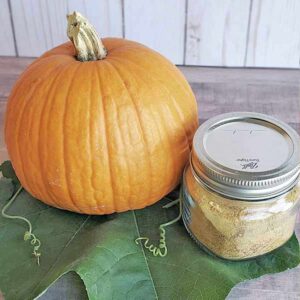
How to Dehydrate Pumpkin and Make Pumpkin Powder
Equipment
- Blender or coffee grinder
- Fruit leather sheets Parchment can be used instead
- Offset Spatula
Ingredients
- Pumpkin Any variety
Instructions
Preparing Pumpkin Puree
- Wash pumpkins thoroughly
- Cut in sections
- Remove pulp and seeds
- Place on cookie sheets lined with aluminum foil or silicone baking sheets
- Bake at 350°F / 175°C for 45-50 minutes until fork tender, do not let them burn.
- Allow to cook, then remove skin. Set puree aside to cool
Dehydrating Instructions
- Spread puree thinly on dehydrating trays lined with fruit leather sheets. 1/4" to 1/8" is good.
- Dry at 125°F / 52°C for 10-12 hours
- Puree should be brittle
- Condition
- Store in airtight containers ion shards
To Make Pumpkin Powder
- Place pumpkin shards in a blender.
- Pulse until smooth powder is formed.
- Pour onto baking sheet and place inside oven that has been warmed to 175°F, but turned off.
- Remove after 20 minutes, allow to cool, store in airtight container with desiccant packs.
Video
Darcy’s Tips
To use:
- Mix 2 cups hot water with 1/2 cup pumpkin powder
- Allow the powder to absorb by sitting for 5-10 minutes
- Adjust to your preference if too thick or too loose.
Nutrition
Nutritional information is an estimation only. Nutrient information for dehydrated foods is based on fresh. Use 1/4 of the servicing size for the same nutrient information. Thus 1 Cup of fresh fruit has the same sugars as 1/4 dried.
©ThePurposefulPantry. Photographs and content are copyright protected. Sharing of this recipe’s link is both encouraged and appreciated. Copying and/or pasting full recipes to any social media is strictly prohibited.

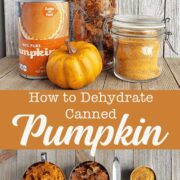
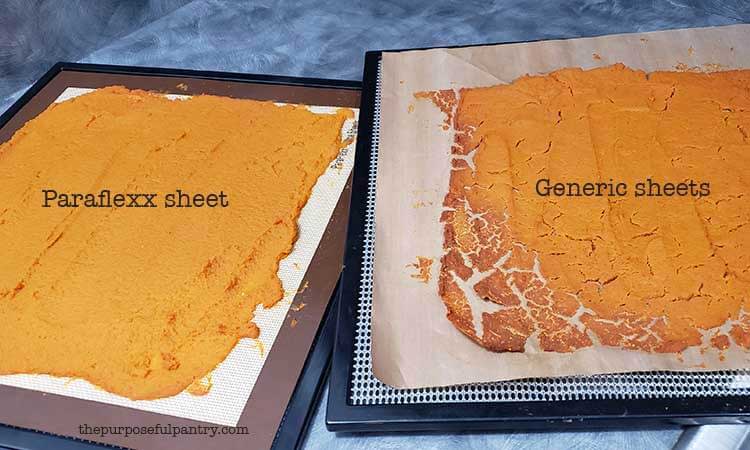
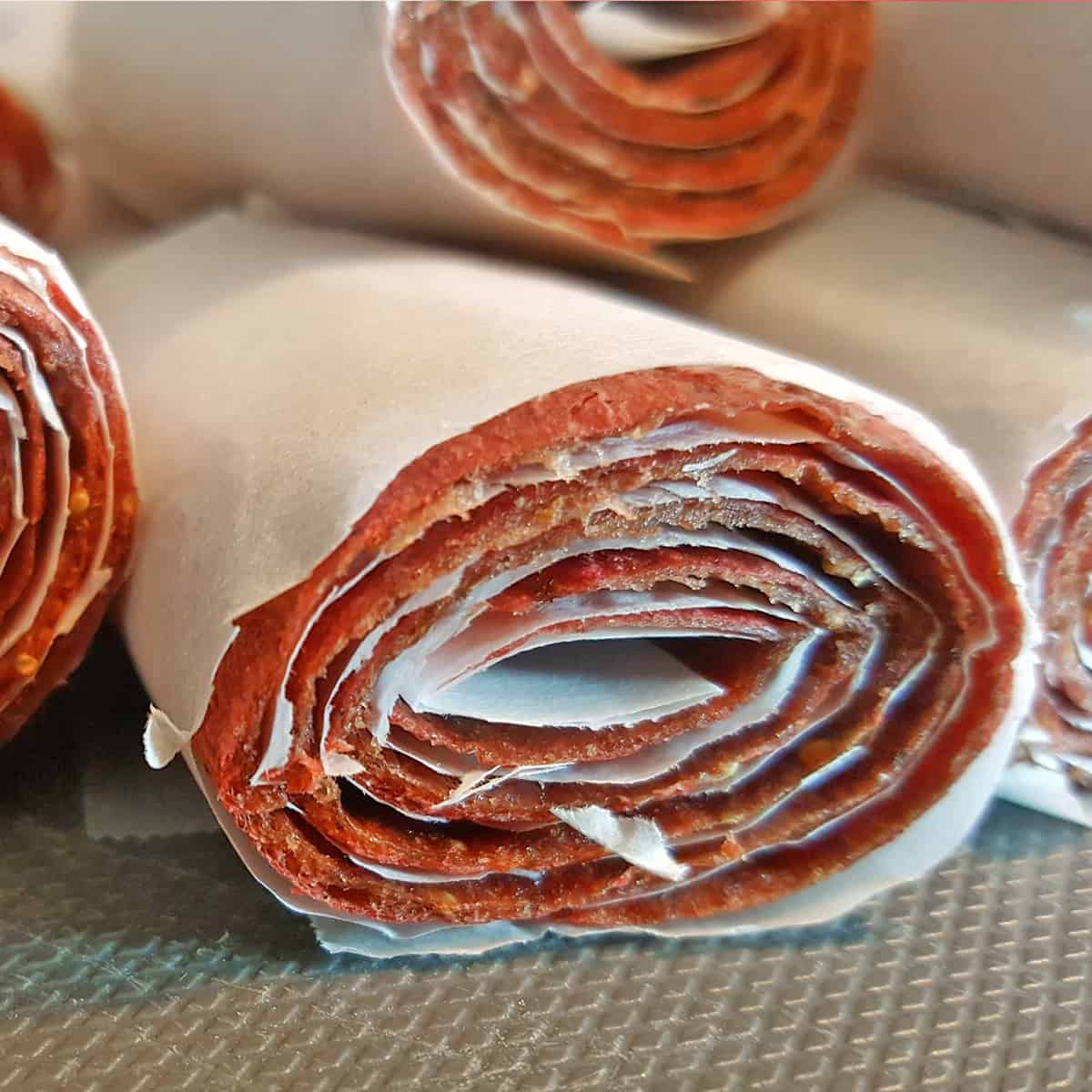
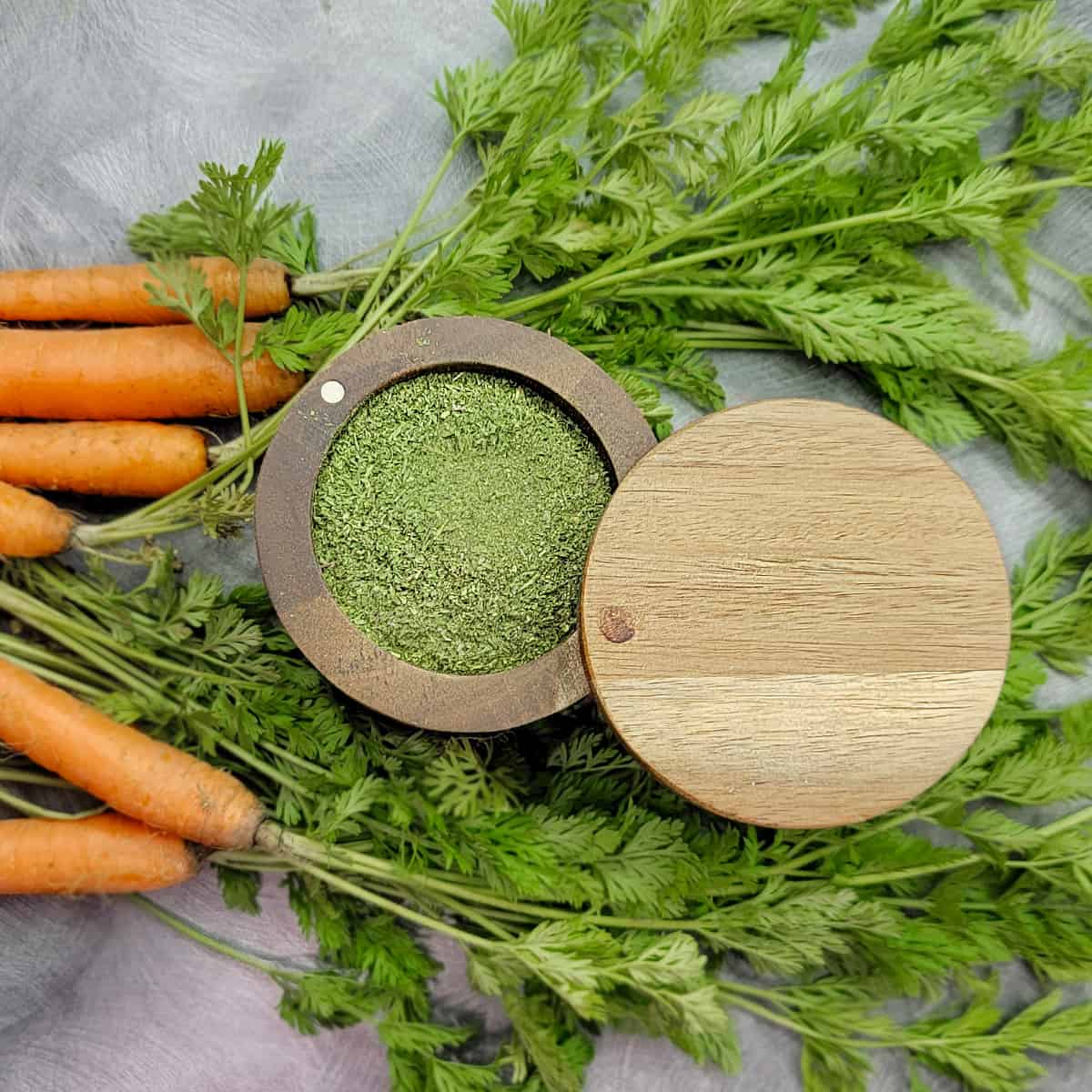
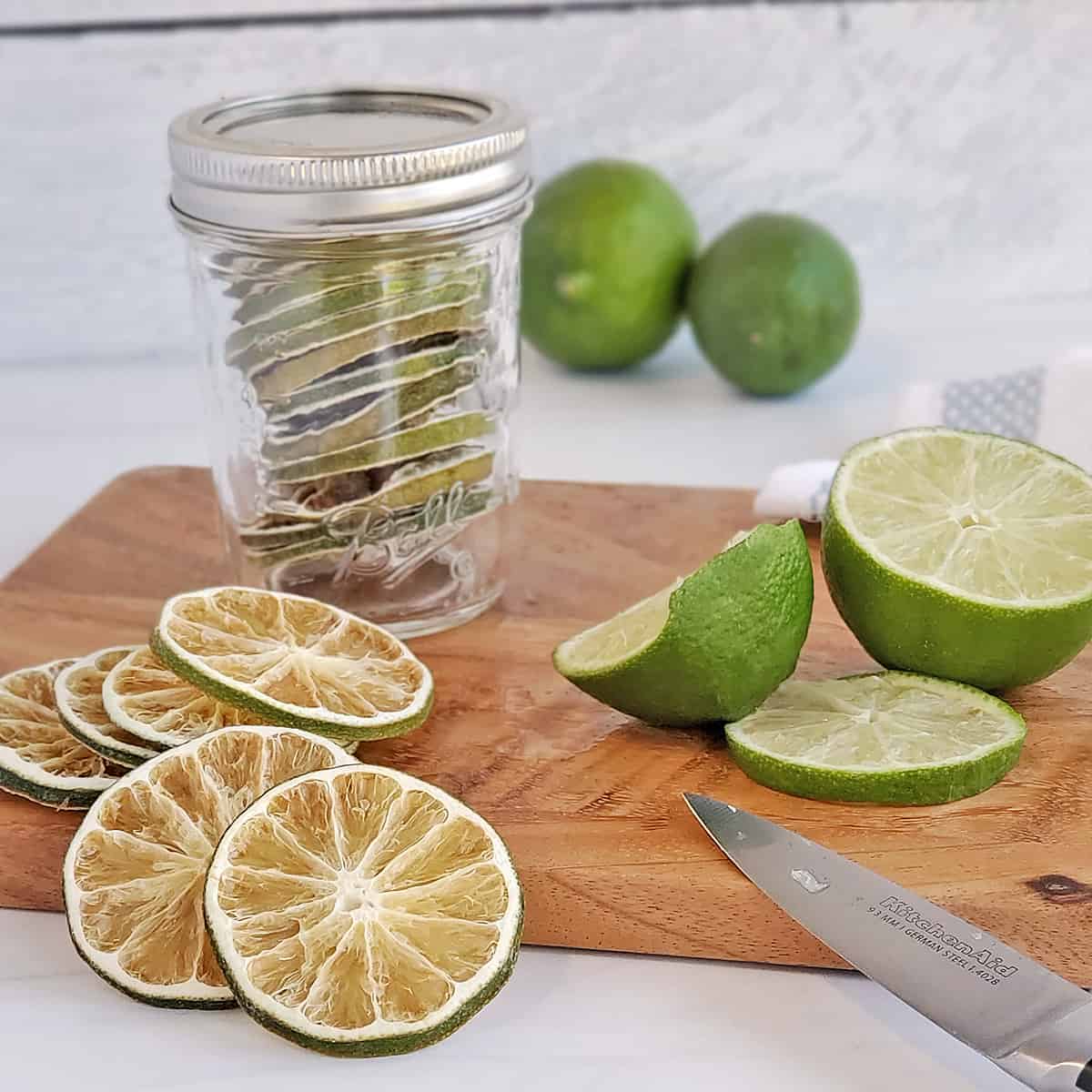
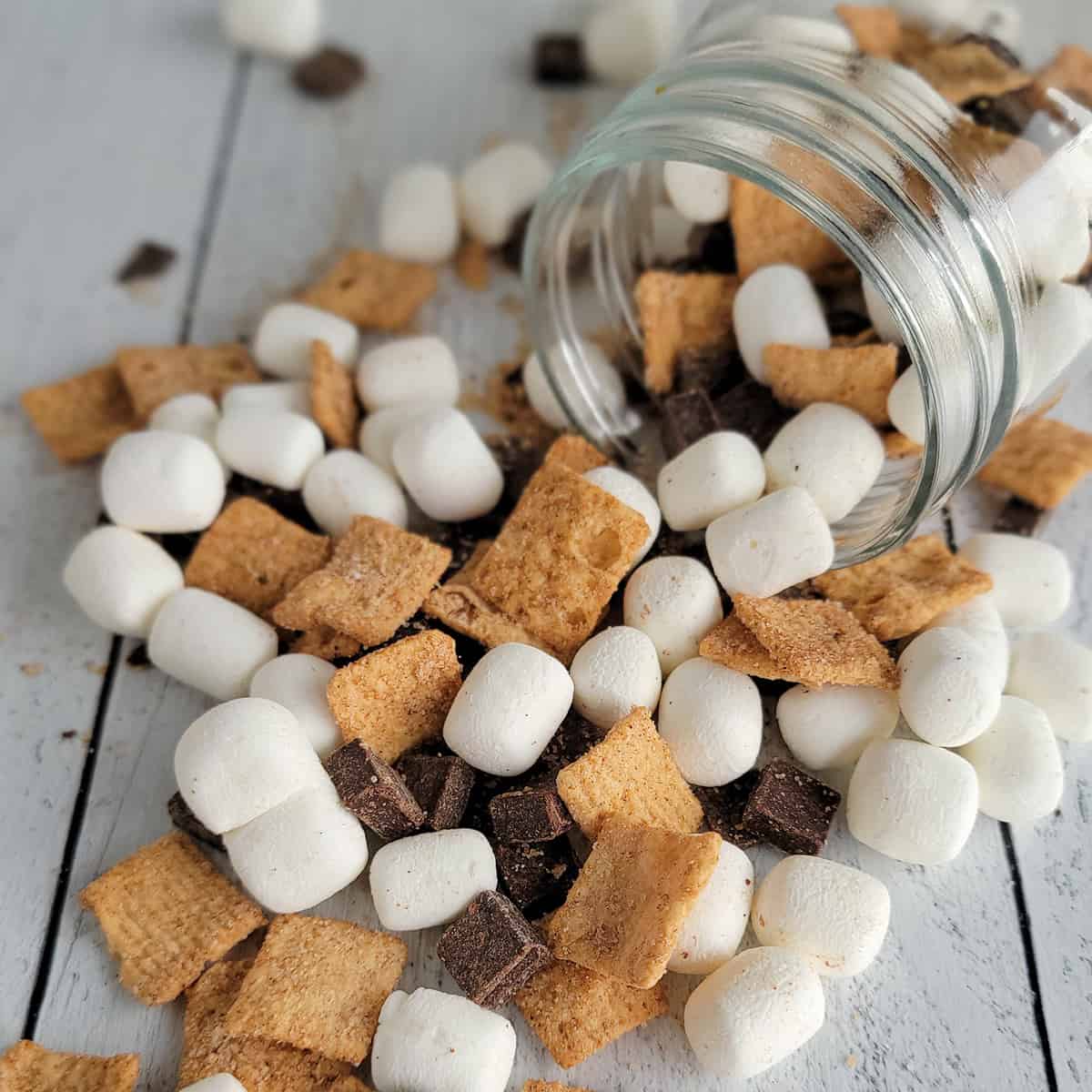
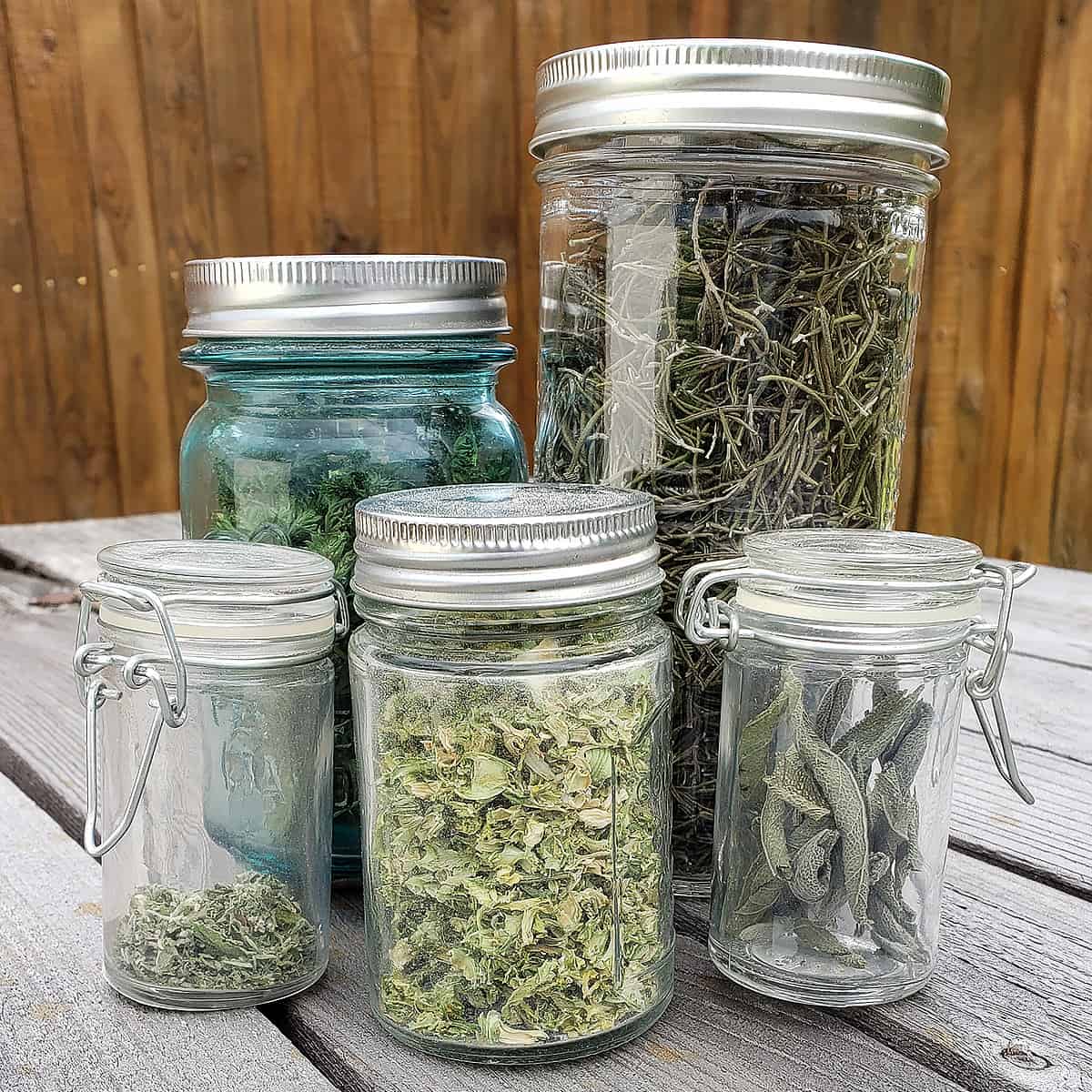
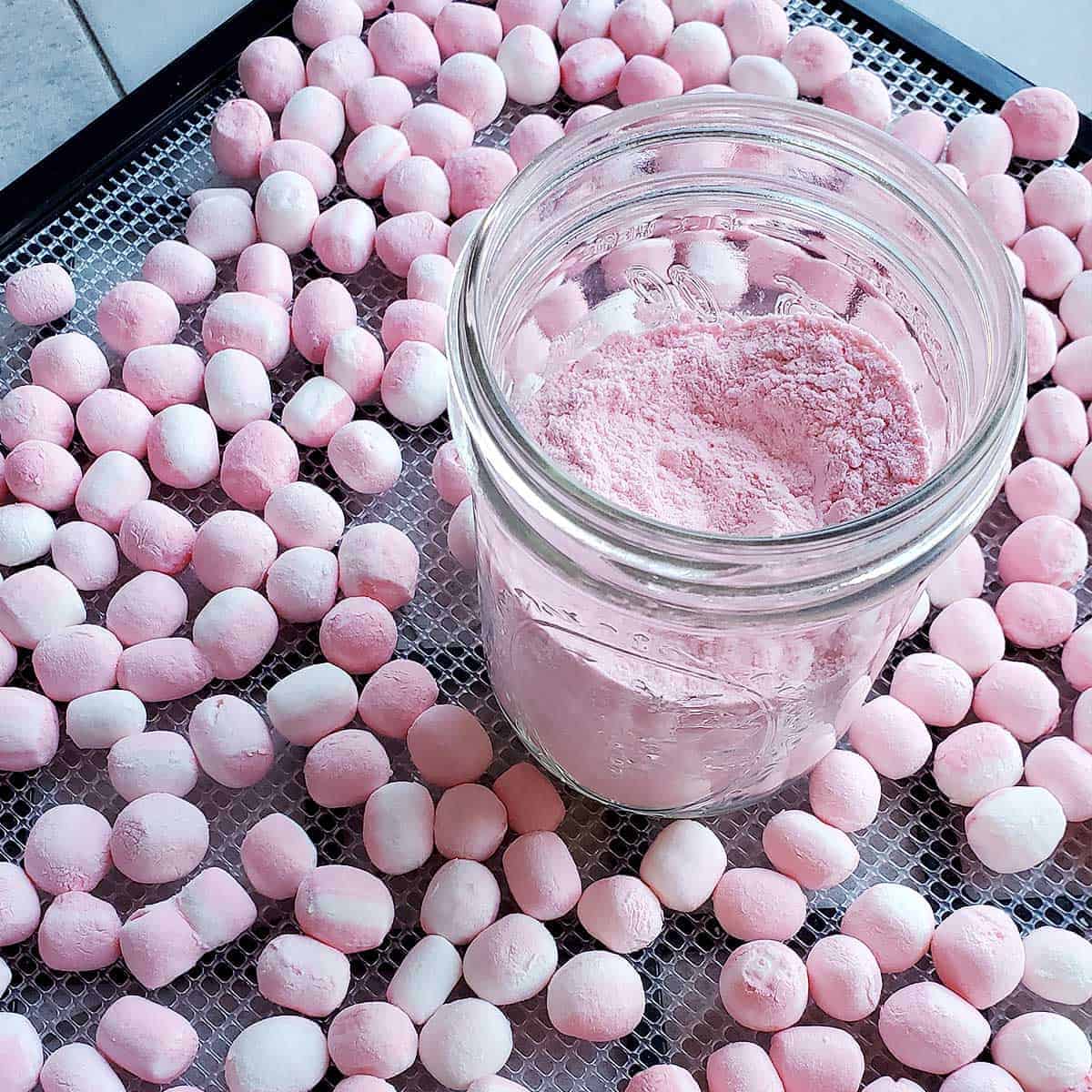
I do not have a dehydrator and do not need one. How can I dehydrate the pumpkin purée in my over? How would I dehydrate a small amount in my air fryer? I am excited to try this.
Just like other fruit leathers, it is possible, just keep a watchful eye out for not burning it.
https://www.thepurposefulpantry.com/how-to-use-an-oven-to-dehydrate/
Hello thanks for all the wonderful info. I am new to your channel but love it and find it very useful. I am wanting to know what kind of fresh pumpkins you use?
Glad to have you here. You can use ANY edible pumpkin or hard/winter squash variety with this method, i.e. butternut, etc.
Can I cook and purée fresh pumpkin to use?
Yes, of course! This puree is where you would be at after roasting!
Can you add the typical spices to the prepackaged pumpkin powder?
You can if you intend to keep it only for baking pies and muffins with. But personally I would keep them separate. We use it a lot without those spices, so I wouldn’t want to mix them up. But you bet it will work. You’ll have to work out your own ratios of how much to use, though.
I like to dehydrate and make powders. Will be trying this pumpkin powder this fall. Found you on Simple Homestead Blog Hop.
Hope you love the results, Candy! Thanks for stopping by!
I’ve never tried this…thanks for the info! I will have to try it in the fall when I’m harvesting my pumpkins. 🙂 Saw you on the Simple Homestead Hop!
Thanks, Lisa! And yes, this works perfectly on home harvested pumpkin puree, too! I’d love to hear your results!